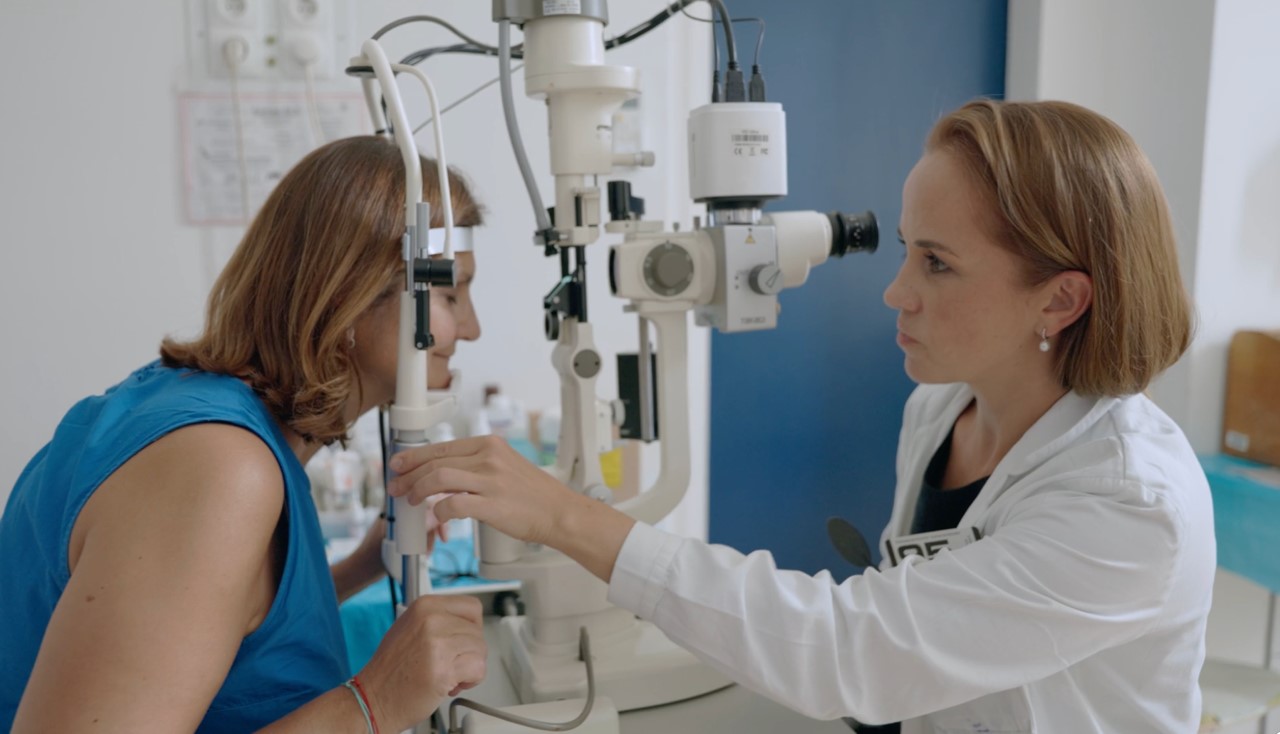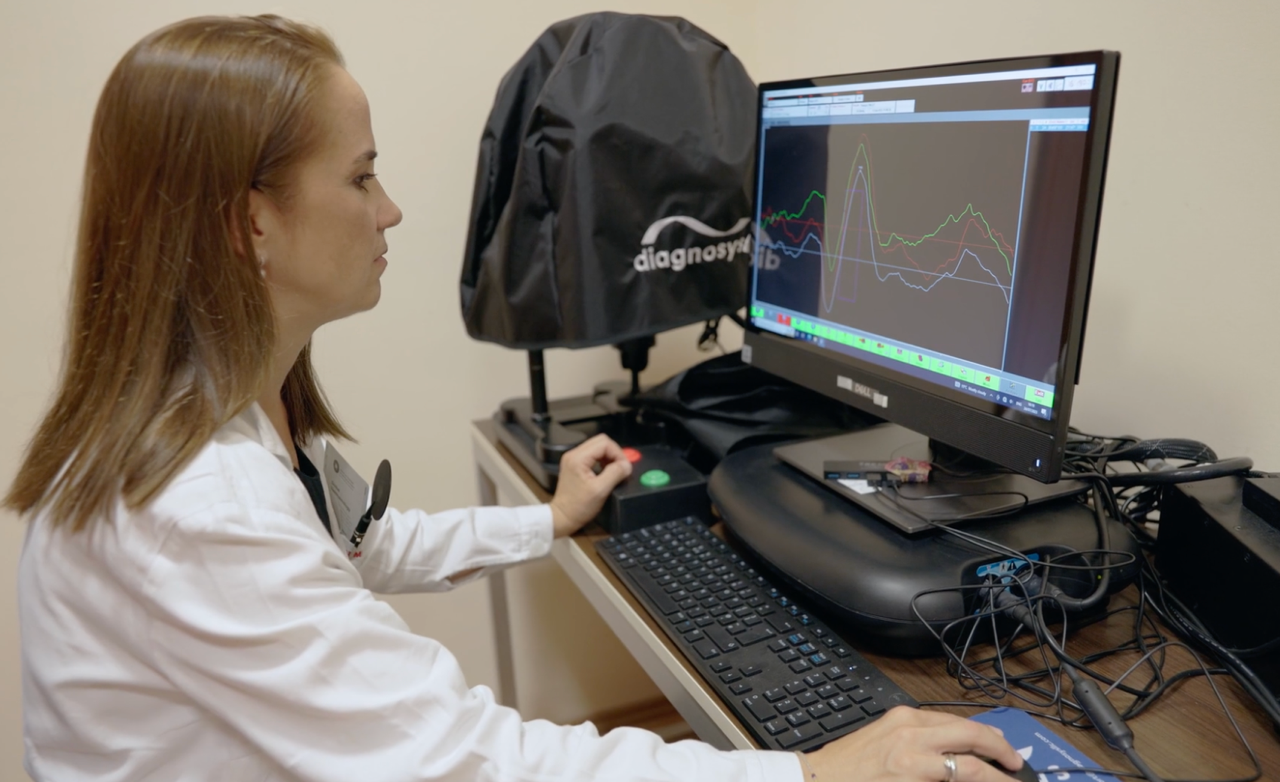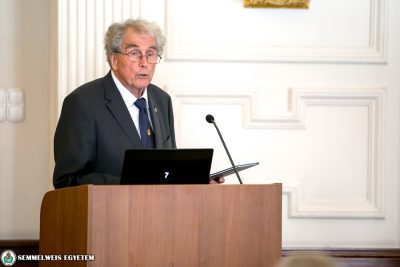Ophthalmology is a small, well-defined but in many ways very complex area of medicine. The structure and function of the retina itself is very complicated, not to mention the fact that understanding the process of vision, the formation and cause of diseases, the preservation of vision and the cure of illnesses still has much to be discovered. “That’s why I committed myself to ophthalmology. What also attracted me to this discipline is that, because everyone needs an ophthalmologist sooner or later, I not only see a small group of people during my work, but I have patients from very young children to the elderly,” says Dr. Annamária Ditta Zobor, Associate Professor at the Department of Ophthalmology, Semmelweis University, who was awarded the “L’Oréal-UNESCO Hungarian Scholarship for Women in Science” in 2023 as a recognition for her achievements.
She turned to the treatment of hereditary retinal diseases such as retinitis pigmentosa, her more narrow field of expertize, during her years at the ophthalmology clinic in Tübingen after graduating from university, under the guidance of her professor Dr. Eberhart Zrenner. “He is a fantastic researcher and person, my greatest role model, and is credited with the development of one of the subretinal implants. Thanks to his work there, I was able to learn many research methods, including drug trials and gene therapy developments,” Dr. Annamária Ditta Zobor recalls the early days.
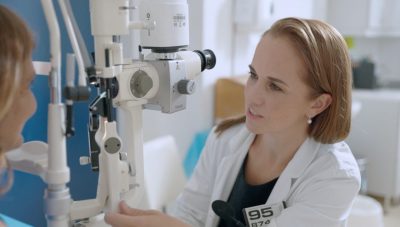 After 17 years of work in Germany and her habilitation at the University of Tübingen, having returned to Hungary, she would like to transfer her knowledge and approach to functional diagnostics, electrophysiology, imaging and ophthalmogenetics to Semmelweis University, and to introduce the use of these diagnostic tools into daily clinical practice.
After 17 years of work in Germany and her habilitation at the University of Tübingen, having returned to Hungary, she would like to transfer her knowledge and approach to functional diagnostics, electrophysiology, imaging and ophthalmogenetics to Semmelweis University, and to introduce the use of these diagnostic tools into daily clinical practice.
The study of the pathogenesis of hereditary retinal diseases, the exploration of their genetic background, the research of therapeutic options is one of the most intensively developing areas of ophthalmology today, with numerous researches aiming at how to correct these genetically encoded defects, how to halt the diseases or replace the already destroyed cells. So far, there are just a few therapeutic solutions – only one gene therapy drug has been registered, but it is available at the Department of Ophthalmology’s Gene Therapy Centre.
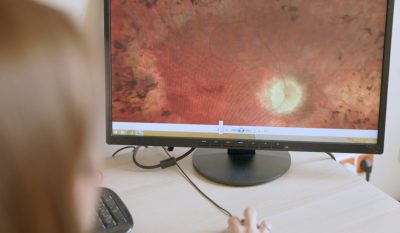 However, there are promising trends in gene therapy research, the results of which will hopefully reach the clinical stage. These treatments are primarily aimed at preserving vision, using gene therapy to maintain or increase the viability of light-sensing cells that are still alive in the eye. In more advanced forms of the disease, however, the loss of photoreceptor cells in the neuroretina has already been so substantial that they need to be replaced – in which case the currently available gene therapies can no longer make a real difference. However, the optogenetic treatment developed by Dr. Botond Roska in Basel – in collaboration with the Institute of Anatomy at Semmelweis University – is promising, in which other cells in the retina are to be made light-sensitive. “These are very exciting solutions, and I am currently involved in the clinical investigation of therapeutic solutions for these diseases, in addition to outpatient care for hereditary retinal diseases and the treatment of patients at the gene therapy centre,” said Dr. Annamária Ditta Zobor.
However, there are promising trends in gene therapy research, the results of which will hopefully reach the clinical stage. These treatments are primarily aimed at preserving vision, using gene therapy to maintain or increase the viability of light-sensing cells that are still alive in the eye. In more advanced forms of the disease, however, the loss of photoreceptor cells in the neuroretina has already been so substantial that they need to be replaced – in which case the currently available gene therapies can no longer make a real difference. However, the optogenetic treatment developed by Dr. Botond Roska in Basel – in collaboration with the Institute of Anatomy at Semmelweis University – is promising, in which other cells in the retina are to be made light-sensitive. “These are very exciting solutions, and I am currently involved in the clinical investigation of therapeutic solutions for these diseases, in addition to outpatient care for hereditary retinal diseases and the treatment of patients at the gene therapy centre,” said Dr. Annamária Ditta Zobor.
She believes that the only way to care for these patients properly is to specialize in their ailments, to have a specific centre where these patients can be seen on a daily basis and doctors can gain all the necessary experience.
In the long run, I would like to see the university recognized as a centre in Europe that is one of the best choices for clinical research into therapeutic agents for rare eye diseases, and that these treatments work and that we can help patients, of course. It is also important for me to connect patients with a very advanced disease or for whom no therapy is available yet with patient advocacy groups, to raise awareness of the possibilities for primary rehabilitation,” said Dr. Annamária Ditta Zobor.
I also like teaching, I enjoy thinking together with students, to show that ophthalmology, although a smaller subject in undergraduate education compared to others, is an incredibly fascinating and complex field,” she said. She added that she would like to organize training courses for young colleagues in certain examination methods, genetic background analysis and webinars with renowned foreign lecturers. In the longer term, she also plans to set up a working group to research the treatment of hereditary retinal diseases further, involving young people who are working with her as specialists, TDK students or PhD students. Over time, she would like to ensure that the clinic is not only a gene therapy centre for one drug, but also that various gene therapy drugs, even those that are still being tested, enter the clinic within the framework of a clinical study, or that the equally promising stem cell therapy treatment is also available. The professional conditions are basically given for this, and in addition to the high level of functional diagnostic tests, I am looking for national and international funding opportunities to expand the equipment portfolio,” added Dr. Annamária Ditta Zobor.
Melinda Katalin Kiss
Translation: Viktória Kiss
Photo: L’Oréal Hungary
